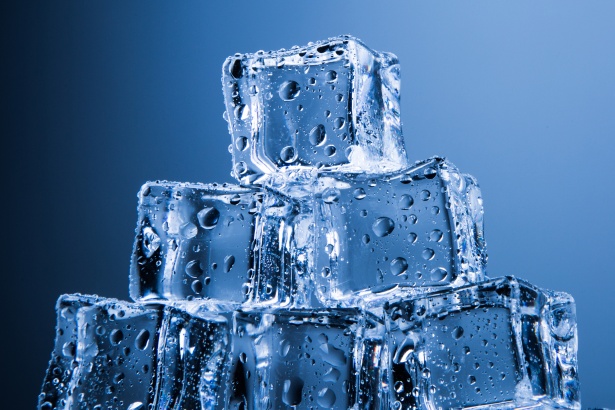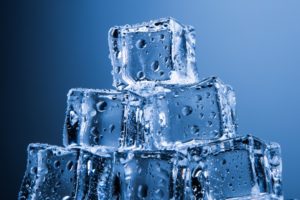If you missed parts 1 and 2 of my recovery series in which I discussed electrical muscle stimulation and compression you can check out those articles as well. In part 3 of this series I’ll be discussing ice and heat, covering both their applications and effectiveness.
Ice and heat have been around as passive recovery modalities for a long time. However, recently they have gotten some attention with additional research into their role in improving performance and the introduction of full body cryotherapy.
Ice
In 1978, ice gained popularity as a tool for recovery when Dr. Gabe Mirkin coined the term “RICE” (rest, ice, compression, elevation) for the treatment of acute injuries in his book Sportsmedicine Book. Ice was, and still is, a very popular passive recovery modality for pitchers after high intensity throwing, such as games. But is it effective at enhancing recovery and are there any objective improvements in performance metrics?
How it works
Inflammation is the response of living tissue to injury, such as throwing or exercise, involving both a vascular and cellular response. The vascular response begins with vasoconstriction for a few seconds followed by vasodilation, increased blood flow and swelling, as well as increased vascular permeability. The increased blood flow and permeability allows plasma proteins and leukocytes, immune system cells, to enter the site of tissue damage and begin repairing the damage.
The logic behind using ice is that it will keep the sore or injured area from swelling and reduce the pain through vasoconstriction (reduced blood flow). Essentially, the goal of ice is to reduce inflammation so that you can go back to what you were doing sooner, such as throwing, prior to the inflammation. But it seems that it may actually delay the inflammation process leading to longer recovery times. For example, one study found that recovery from eccentric exercise was delayed by the use of topical cooling. 42-72 hours after post-exercise icing, subjects had greater elevations in blood markers of muscle damage, as well as increased perceived fatigue (Tseng et al., 2013).
Ice is not only used by athletes who feel sore. Many athletes use it as a preventative measure, and may use it frequently after training sessions in hopes of reducing recovery time. However, the use of regular post exercise cold water immersion (ice bath) is suspected to result in smaller long-term gains of strength and hypertrophy (Roberts et al., 2015). This study found that cold water immersion “attenuated (reduced) the acute changes in satellite cell numbers and activity of kinases that regulate muscle hypertrophy (Roberts et al., 2015).”
Even Dr. Mirkin who helped make ice popular has gone back on his “RICE” principle writing, “Coaches have used my “RICE” guideline for decades, but now it appears that both ice and complete rest may delay healing, instead of helping.”
Heat
As ice has fallen out of favor, heat has subsequently gained some traction. But is it more effective at enhancing recovery and does it show any objective performance improvements after its use?
How it works
Heat therapy results in vasodilation, increased blood flow, which is the opposite of ice. Therefore, there is an opportunity for more fluid to get to the injured or sore tissue aiding in recovery. But what does the science say about this and the performance benefits?
Pain relief is often one of the goals of recovery as pain and discomfort can limit the ability of athletes to perform at their peak. Heat was shown to provide significantly better pain relief from DOMS than ice (Malanga et al., 2015). Fatigue resistance is another aspect of fitness that may be negatively affected by training. Heat therapy was also shown to accelerate the recovery of fatigue resistance following eccentric exercise (Kim et al., 1985).
Even though recovery of pain and fatigue resistance are great, we are also after other performance benefits such as strength and power. While there is relatively limited research, one study found that heat, compared to cold therapy, was better at preserving mean power output and improving skeletal muscle recovery following endurance exercise (Cheng et al., 2017).
One very interesting specific type of heat therapy is far infrared radiation(FIR), which is a subdivision of the electromagnetic spectrum. The specific type of FIR heat used in the study I will be discussing is in a FIR heating pad, but lamps and saunas (a topic for a future article) also exist. Power athletes found that the use of whole-body FIR heating pads increased countermovement jump, peak power in the Wingate test (cycling test of anaerobic power lasting 30 seconds), and increased testosterone/cortisol ratio (Naponen et al., 2015).
Conclusion and take home points
Heat and ice just like all other passive recovery modalities have a relatively small role in recovery, but if they can offer some advantage they may be worth exploring. Ice seems to offer relatively few benefits outside of reducing pain in the immediate aftermath of an acute injury. However, this may lengthen the recovery process by delaying inflammation and not allowing the body to begin the healing process, so ice is probably not worth using.
Heat on the other hand seems to have some performance benefits when used prior to training, as I’ve written about in the past, but there is limited research showing improved recovery with heat post exercise. However, FIR heat does seem to have some interesting research behind it that may be worth exploring further. Overall, heat seems like a passive recovery modality worth using in moderation, especially FIR.
Resources
Tseng CY, Lee JP, Tsai YS, Lee SD, Kao CL, Liu TC, Lai C, Harris MB, Kug CH (2013) Topical cooling (icing) delays recovery from eccentric exercise-induced muscle damage. Journal of Strength and Conditioning Research.
Roberts LA, Raastaad T, Markworth JF, Figueiredo VC, Egner IM, Shield A, Cameron-Smith D, Coombes JS, Peake JM (2015) Post-exercise cold water immersion attenuates acute anabolic signalling and long-term adaptations in muscle to strength training. Journal of Physiology.
Mirkin, Gabe. Why Ice Delays Recovery. DrMirkin.com. http://www.drmirkin.com/fitness/why-ice-delays-recovery.html
Malanga GA, Yan N, Stark J (2015) Mechanisms and efficacy of heat and cold therapies for musculoskeletal injury. Postgraduate Medicine Journal.
Kim K, Kuang S, Song Q, Gavin TP, Roseguini BT (1985) Impact of heat therapy on recovery following eccentric exercise in humans. Journal of Applied Physiology.
Cheng AJ, Willis SJ, Zinner C, Chaillou T, Ivarsson N, Ortenblad N, Lanner JT, Holmberg HC, Westerblad H (2017) Post-exercise recovery of contractile function and endurance in humans and mice is accelerated by heating and slowed by cooling skeletal muscle. Journal of Physiology.
Noponen VP, Hakkinen K, Mero AA (2015) Effects of Far Infrared Heat on Recovery in Power Athletes. Journal of Athletic Enhancement.


